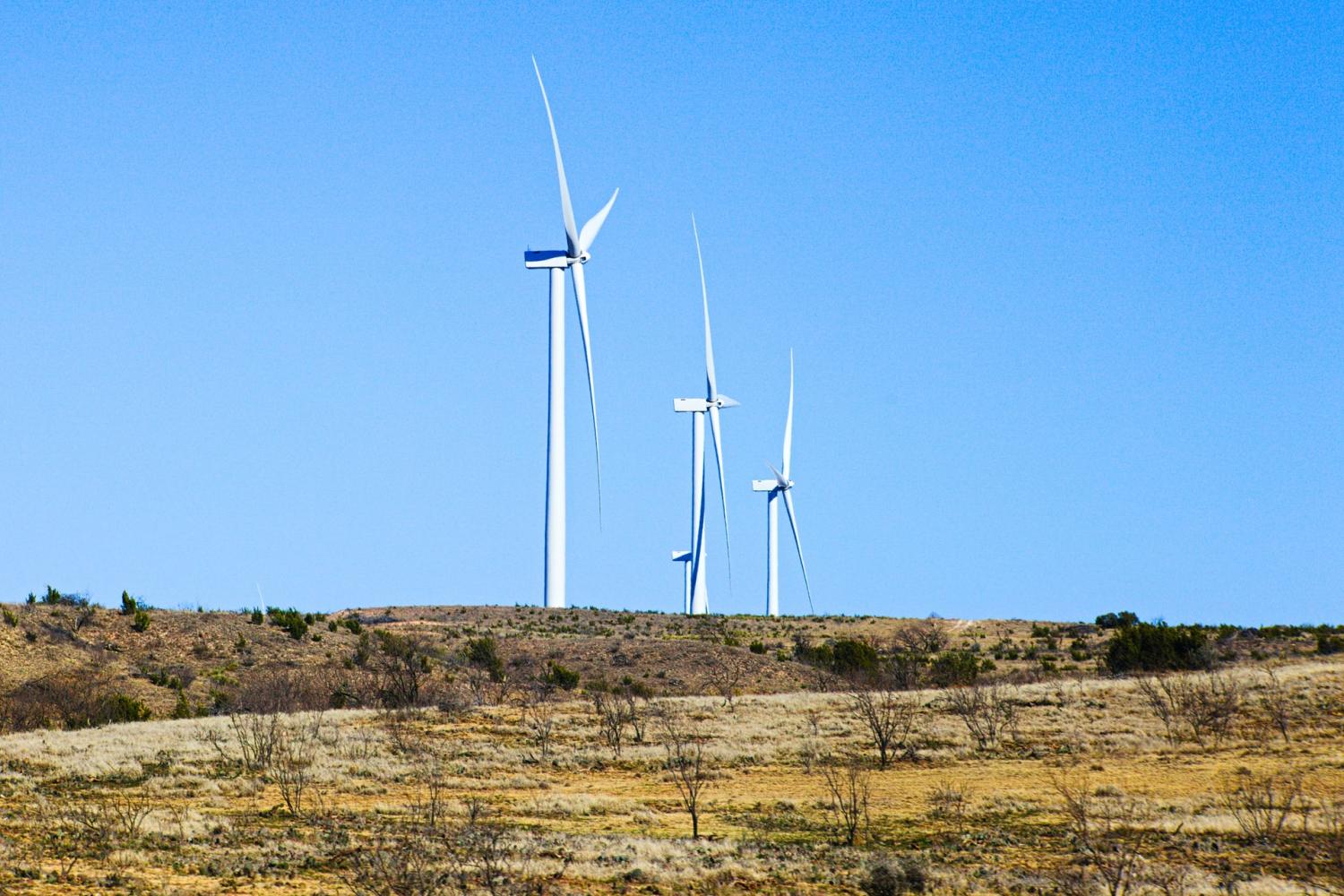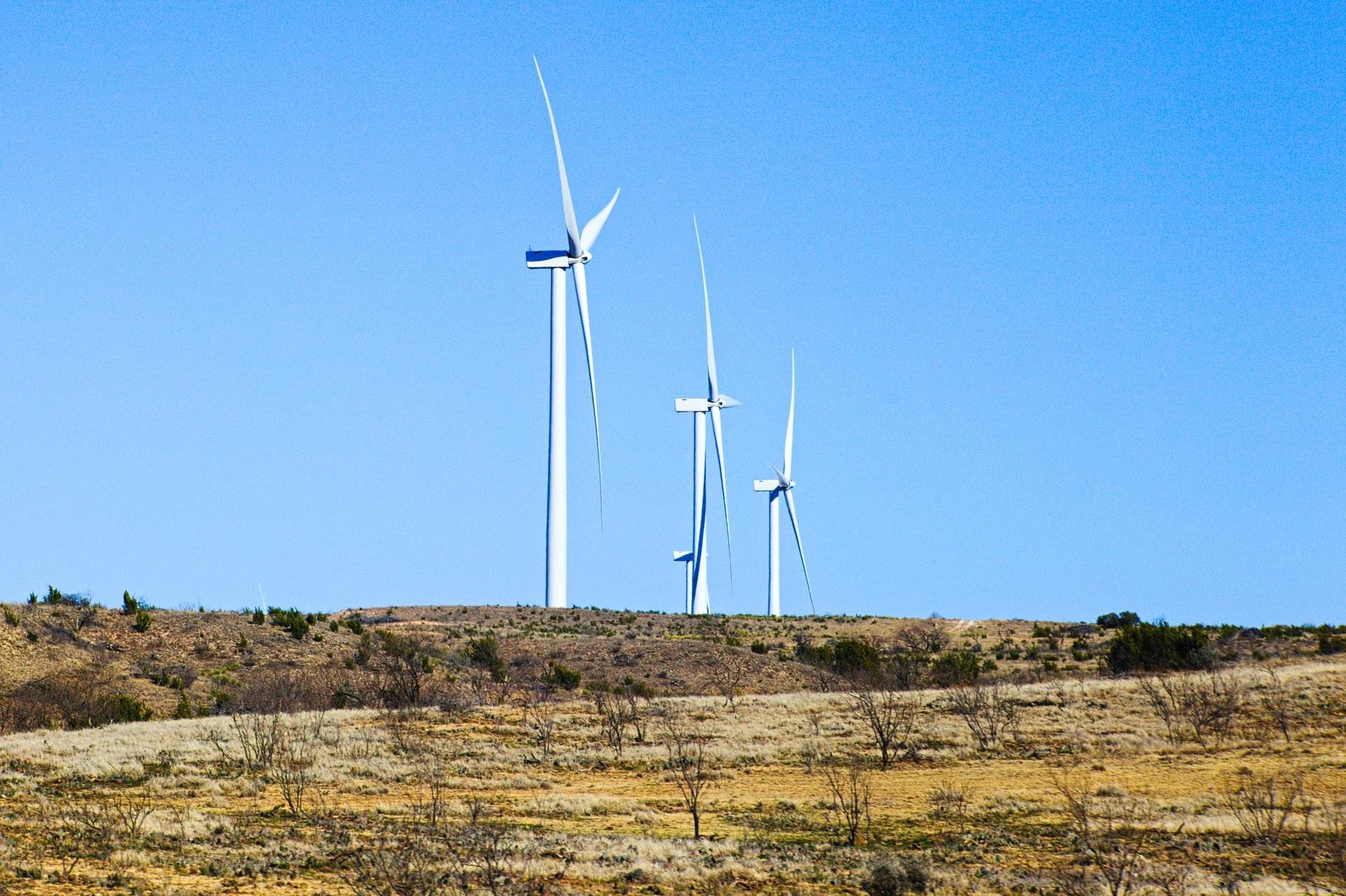This Nordic Country Now Gets More Power from Renewables Than Fossil Fuels


Despite a global pandemic that kept many of us indoors for months on end, our fascination with viewing nature from our living room windows hasn’t resulted in the global sustainability movement that we assumed would unfold. While worldwide investment in renewables enjoyed steady growth last year, evidence suggests the growing climate crisis is outpacing any transformation from conventional energy to more sustainable sources.
“The world’s dependency on fossil fuels is likely to get even worse in the coming decades, exacerbating the risk of a climate catastrophe as world leaders and CEOs repeatedly tout their commitment to the so-called ‘energy transition,’” headlined one CNBC story last week.
And after being cooped up for the past year, it’s clear that any calls to curb our collective energy demand could for the most part go unheard. An anticipated global economic boom signals an increase in just about everything that requires energy, from road trips to shipping and manufacturing.
Yet last week, one country announced that its energy transition is well underway. Statistics Finland, the Nordic country’s national information service, said renewables outpaced the use of fossil fuels and peat last year. Although consumption of renewable sources of power decreased by 1 percent, their share of Finland’s energy portfolio increased to 40 percent, due to a decline in usage of both fossil fuels and peat.
The decrease in peat usage is particularly encouraging, as the burning of this partially decayed turf for fuel has been a significant contributor to Finland’s carbon footprint. Largely welcomed a half century ago when Finland, like much of the world, faced an energy crisis, the use of peat for energy has longed been slammed by critics for its carbon intensity and impact on ecosystems such as wetlands.
Wind power surged across Finland last year at a rate of 30 percent, followed closely by hydropower. Finland’s government has been keen on boosting wind power capacity by leasing state-owned land to wind farm developers; investments on that front keep hitting the newswires in the meantime.
The Finnish government also appears to be looking at the long game: Its president, Sauli Niinistö, recently expressed his wish to host a major global climate summit in 2025, 50 years after the historic Helsinki Accords, which was one important step in easing relations between the then-Soviet Union and major western powers.
The nation of 5.5 million still has some catching up to do with its neighbors, however, when it comes to the deployment of renewables. For example, Norway generates most of its power from hydropower and has been a leader in electric vehicle adoption. Critics have responded that the oil-rich nation has simply exported its carbon emissions. And in between those two countries, Sweden says 54 percent of its power needs are derived from hydropower and biomass, the latter of which poses its own challenges, say industry observers.
Image credit: Simo Saarinen/Unsplash
Yes, the Mortgage Industry Is As Discriminatory As We Thought


For decades, critics of the home mortgage industry argued its lending practices have routinely discriminated against people of color. Defenders of the sector counter that such assumptions aren’t necessarily the case — blaming disparities on factors like lower incomes or poorer credit scores, fairly typical reasons for someone to be denied a home loan.
Not so fast, say researchers at Morgan Stanley.
A team of four Morgan Stanley professionals poured over Home Mortgage Disclosure Act data from 2010 to 2019. They found that Black home loan applicants with a minimum income of $150,000 were more than twice as likely to be denied mortgages as white applicants. The denial rate for Latino borrowers was also high when compared to that of whites. Further, the percentage of Black and Latino borrowers denied a home equity loan was also much higher than that for whites.
And, to confirm this decades-long practice, the gaps are even wider when comparing people of middle- and lower-incomes.
The study also concluded that the average mortgage rate spread for white borrowers was about 0.5 percent, while Black and Latino borrowers who scored the same loans had a rate spread almost five times as high. As a result, years of such practices taken by the mortgage industry has made home ownership far more expensive for Black and Latino borrowers, which Morgan Stanley says can get in the way of long-term wealth creation, one factor that explains the massive wealth gap between whites and people of color in the U.S. Even more disturbingly, in states with a higher Black population, Black borrowers are even more likely to be denied loans, according to the report.
In any event, the home ownership gap between Black and white families is wider now than it was 50 years ago.
This research from Morgan Stanley is yet another example of the systemic racism that has long been part and parcel of many lives in the U.S. And as much as it is a source of frustration for communities of color, this latest survey, say its authors, is also problematic for investors who are determined to eliminate any evidence of inequalities within their assets.
So, how can the mortgage industry curb this harmful practice and gain the trust and confidence of their investors that they are truly doing the right thing? According to Morgan Stanley's team, much can be achieved through more transparency. “If [Fannie Mae, Freddy Mac and Ginnie Mae] collected and disclosed the lending patterns of mortgage originators in an aggregated report collected quarterly, for instance, it would help investors to make informed decisions based on racial equality considerations,” the report reads.
In other words, if investors were able to see which financial companies were applying fairness to their lending practices as well as their competitors who were falling short, the resulting pressure could lead to more banks changing how they approach home mortgage loans. And in an industry that amounts to a $7 trillion market, such transparency would force lenders to review their loan practices — or else risk that investors begin to shun them and shed such equities from their portfolios.
Events of the past several weeks suggest that banks and the wider financial sector need to turn the corner, finally, on what at a minimum has been a half-century of discriminatory practices. Whether it’s through the transparency in the mortgage industry that Morgan Stanley suggests or taking a hard and close look internally, the sand is already beginning to shift under financial companies’ feet. BlackRock, for example, announced earlier this month it would undertake a third-party racial audit to gauge its own role in systemic exclusion and division.
Image credit: RODNAE Productions/Pexels
The Feds’ Scenic Byways Program Gives a Lift to Small Businesses Across the U.S.
Photo: Ragged Point along Highway 1 in northern San Luis Obispo County, California. This is one of several scenic byways that the Federal Highway Administration has marked as an “All-American Road.” (Credit: Leon Kaye)
As the U.S. embarks on a fitful reopening this summer, the Federal Highway Administration (FHWA) recently dangled its own economic stimulus package to many small businesses, just in time for the spring and summer.
The gift from the FHWA comes in the form of the designation of dozens of scenic roads across the country as “America’s Byways." Announced in February, the news first came in the dead of winter and while the future of mass vaccination was still in doubt. But as the number of people who are partially or fully vaccinated continues to climb, more Americans are ready to break free of their cabin fever, yet they may just not quite be ready to fly with the ongoing “middle or no middle seats” on airplanes debate still unfolding.

Is there one of FHWA’s scenic byways near you?
Most of us have few, if any, fleeting thoughts of the Federal Highway Administration — unless, of course, we are cursing construction or gridlock on an interstate. But in addition to building and managing the country’s highway systems, the FHWA runs several smaller programs, including America’s Byways.
Whether they are “National Scenic Byways” or “All-American Roads,” the routes that the 30-year-old FHWA program recognizes are streets and highways that in some way contribute to the American experience. The process is fairly straightforward: Such roads and highways must already be recognized as a state-level scenic byway and demonstrate regional importance. Finally, depending on the designation, these routes but possess at least one or two of the following attributes: They must show archaeological, cultural, historic, natural, recreational or scenic significance.
A lift for independent businesses and the outdoor recreation industry
The scenic byways that have won these FHWA seals of approval run literally and figuratively all over the U.S. map, from remote desert highways in California to Charles Street in historic downtown Baltimore. For visitors, the experience of driving along these highways and streets can be stellar. Just ask anyone who has experienced Highways 1 and 101 versus Interstate 5 in California; the same goes for U.S. Routes 9 and 9-W in upstate New York compared to Interstate 87.
The winners aren’t only the likes of history buffs, antiquers, kayakers or rockhounders — local businesses could benefit this summer as well. The new scenic byways are a boon to main street businesses, independent hotels and roadside diners that have cause for some optimism as they get ready to welcome visitors a year after the dreadful summer of 2020.
"Through their many unique qualities, each of these new additions to the National Scenic Byways program helps America’s roads tell our national story," said Tom Everett, FHWA’s executive director, in a February public statement. "These special routes offer travelers exciting new opportunities to explore the nation, from coast to coast or close to home."

The economic case for branding that scenic country road
The newly designated routes are scattered afar, from inland Maine’s Katahdin Woods and Waters Scenic Byway to the Flaming Gorge-Green River Basin Scenic Byway in southwestern Wyoming.
Scenic America, one nonprofit that is focused on preserving the character of older towns and cities, as well as much of the U.S. countryside, also welcomed the move — noting this was the first batch of newly labeled scenic byways since 2009. “The program’s revitalization comes at a critical time for the travel and tourism sector as it contends with the devastating impacts of COVID-19 on communities that rely on a robust hospitality industry,” the group announced shortly after the FHWA’s statement.
Just as evidence suggests investments in the arts can spark local economies, a similar argument can be made for these scenic byways. Over a decade ago, for example, the University of Minnesota completed a study concluding that that investments along some of the North Star State’s scenic routes paid off for local communities.
And with over 180 of these routes across the U.S. — the only two states without any are Hawaii and Texas — the results could mean more local spending and a break from the pandemic routine most of us have been living for more than 12 months.

Image credits: Gene Gallin/Unsplash; Christian West/Unsplash; Joel DeMott/Unsplash; Leon Kaye
New Tracker Keeps Companies Accountable on Racial Equity Progress


Events over the past few weeks, notably the court trial of Derek Chauvin for his role in the killing of George Floyd coupled with the shooting and death of Daunte Wright, offer a reminder that the U.S. still has much work to do on the racial equity front. And while the U.S. business community by and large has said it is aligned with the Black Lives Matter movement, the responses of many Americans to that sentiment can be summed up in two words: “Prove it.”
To that end, the nonprofit Just Capital recently launched an initiative it says will help keep America’s largest companies accountable on their racial equity work over the next several years.
The Corporate Racial Equity Tracker is designed to help stakeholders gauge how companies are performing when it comes to tackling racial equity. At the same time, Just Capital says this project will help companies make the progress necessary to ensure their actions match their words.
The tracker, which monitors an A-list of marquee American brands from Amazon and Microsoft to Verizon, suggests that most companies have completed the easy steps necessary to begin building an equitable culture. For example, all of the companies Just Capital analyzed have issued at least one anti-discrimination policy. Further, close to all of these companies — over 90 percent — have invested in some level of an education and training program; the same is true about “community investments,” whether that’s donating to local schools, or sourcing goods and services from businesses owned by people of color.
But as far as the harder and more challenging work goes, a starkly different story is at hand. Only a third of these same companies have confirmed that they undertook a pay equity analysis to ensure complete fairness in employee compensation. Less than 30 percent of them have disclosed any measurable targets for increasing diversity within their employee ranks. And despite the ongoing national conversation about criminal justice reform, less than 10 percent of these companies said they have a program in place to train and hire formerly incarcerated people.
“Although many of our nation’s largest companies have made improvements in addressing diversity and inclusion, our Tracker reveals companies still have a long way to go to demonstrate that they are walking the talk and implementing meaningful actions that help fundamentally advance racial equity in America," said Just Capital’s Yusuf George in a public statement. “Corporate America has a significant role to play in undoing the racist structures that have fostered and enabled inequities for decades. With most U.S. corporations promising to create a more equitable economy and future for all, we can help hold them accountable to those commitments and ensure they deliver for their employees, customers, and communities."
Just Capital says its research is about doing more than calling companies out on their work (or lack thereof) on racial equity. The organization also has a wealth of resources available for companies committed to doing better, but are perhaps befuddled as to sorting out how exactly they can start.
Similar to how talking about climate change does not necessarily mean a company is changing its business approach in order to minimize its impact on the planet, Just Capital has made it clear that conversations about diversity and inclusion are not the same as getting that work done.
“We are at a significant inflection point where people have really not just looked at D&I as a word, but really the action behind it, and the importance of it to business and society,” said Dawn Jones, Intel’s acting chief diversity and inclusion officer. “We have to be active and engaged and innovative and disruptive in order to make the change that we are seeking in all of our businesses.”
Image credit: Katherine Hanlon/Unsplash
NFTs Have Created Their Own Fungible Climate Problem


In case you missed it, NFTs (non-fungible tokens, which doesn’t necessarily clarify much if you haven’t wrapped your head around what they are all about) have become a thing, and the market for them is growing. Whether they are in the form of photos, digital art, videos, audio files or even those cringeworthy Awkward Family Photos, the market for NFTs is surging at a breathtaking pace. From Grimes to LeBron James to Jack Dorsey, just about anyone who’s a big-time or small-time anyone, in any industry, is churning them out — and many NFTS are going for a very pretty penny.
So why buy something non-fungible when you can buy a fungible item like a unique artistic masterpiece or the epic white dress that Marilyn Monroe wore in “The Seven Year Itch?” Well, fans and buyers of NFTs will tell you they are a unique digital asset that can be traced to the original owner. After all, reproduce a Modigliani or a Fendi. The same logic applies to a baseball card from decades ago, or a recreation of Lil Nas X’s “Satan” shoes.
But NFTs are stored and verified through the use of blockchain, which to date makes them impossible to fake — and therein lies a problem, as chatter about their collective climate impact is growing almost at the rate of their value.
All those digital transactions and algorithms that allow for the running, monitoring and verification of blockchain, including bitcoin trading, amount to what critics say is a massive carbon footprint. According to at least one tracker that gauges the energy consumption of the global bitcoin market, the trading of bitcoin alone is requiring more and more power. One recent study suggested that the bitcoin market uses as much power as the all the world’s data centers; another study suggested the industry requires more energy than producing all the gold and copper mined in the world.
Now the focus is turning to the energy consumption that’s fueling the rapid rise of NFTs; one profile on Wired, for example, describes the shock of one NFT artist when he learned that one of his pieces of crypto-art required as much power as his studio consumed over two years.
Further, as Justine Calma wrote for The Verge last month, “Famed auction house Christie’s just sold its first 'purely digital piece of art' for a whopping $69 million. For that price, the buyer got a digital file of a collage of 5,000 images and a complex legacy of greenhouse gas emissions.”
Estimates of how much energy an NFT requires are all over the map. One observer suggested that a collection of Grimes’ NFTs used as much energy as a citizen of the European Union would use in 33 years. Another concluded that a single-edition NFT used as much energy as a typical European household. We’re not talking about online banking or even binging on Netflix — a lot of energy is needed to power these digital masterpieces, and critics have also pointed out that the data centers that allow them to exist are often in countries where regulations are lax at best.
Headlines such as “Ukraine to Set up a Large-Scale Crypto Mining Data Center in a Nuclear Power Plant” don’t exactly paint this world in the most flattering light, either.
The bottom line is that more artists who create NFTs, as well platforms on which they are sold and traded, know that they have a climate action challenge on their hands — and they are beginning to respond in kind.
For example, Nifty Gateway, one platform on which NFTs are sold, says it’s working on a plan so that it can stay compliant with the Paris Agreement — details on how that will occur are currently vague. There’s also talk of a global “Crypto Climate Accord” that could help reduce the industry’s carbon intensity. The worlds of blockchains and NFTs know action is needed, but the total amount of emissions for which this sector is responsible means there is no easy solution such as carbon offsets, which Gizmodo’s Brian Kahn has described as “at best, self-deception and at worst, greenwashing.”
Image credit: Anni Roenkae/Pexels
Brands Address Equity Gap for Black Business Owners and Entrepreneurs


Black Americans make up 13.4 percent of the U.S. population, but own only 2.2 percent of overall businesses, according to the U.S. Census Bureau. This data shines a light on the existing equity gap in the business world today – and the opportunity for companies to close the gap through supplier diversification as well as by creating access and opportunities for Black makers, entrepreneurs and business owners to thrive and flourish. Today, we explore how three companies are launching initiatives to build racial equity.
With social media apps continuously flagged for lack of diversity or having hostile environments, Pinterest is course-correcting by establishing a $500,000 Creator Fund. In addition to policy changes to better protect its users, the Fund focuses on uplifting creators from minority communities by offering consulting, ad credits and compensation for content creation. Alexandra Nikolajev, Creator Inclusivity Lead for Pinterest, explains that this Fund is part of the brand’s overall “journey to build a globally inclusive platform where Pinners and Creators around the world can discover ideas that feel personalized, relevant and reflective of who they are."
Hornitos Tequila has teamed up with The Black List to create the ‘Take Your Shot' program that will spotlight underrepresented filmmakers. The project kicks-off with a contest to identify five emerging producers to support through funding and mentorship – ultimately turning their screenplays into proof of concept short films. This campaign aims to empower diverse creatives to create content that can inspire future generations and break through the historic marginalization of creators of color in media production.
Target is taking large strides in its commitment to racial equity by pledging to spend over $2 billionwith more than 500 Black-owned businesses by 2025. Through this initiative, the retail company will focus on shelving wide-ranging products from Black-owned companies, as well as bolster Black entrepreneurs by assisting them with product development and scaling their production for mass retail. This drive for equity is part of Target’s ongoing dedication to social justice led by its REACHcommittee.
As brands continue to “do the work,” it is important to keep in mind that external efforts are just as critical as in-house JEDI (Justice, Equity, Diversity, Inclusion) strategies. Indeed, 74 percent of Americans believe that companies should not only address internal inequalities, but also engage and take action in the broader societal movement. As more brands focus on how they can support Black communities, they must go beyond their ‘four walls’ and statements of support and start to create extrinsic opportunities within communities and throughout broader business sector.
Previously published in the 3BL Media newsroom.
Image credit: My Networking Apparel/Unsplash
ALEC Attacks Biden on Climate Action, But Texas Could Bite Back


The powerful lobbying organization ALEC has been losing corporate members in recent years, partly due to its efforts on behalf of fossil energy stakeholders. ALEC’s latest initiative is all but certain to drive more members away as it gears up to fight the Biden administration on climate action. However, ALEC could still remain a force to be reckoned with, and a hint of its ongoing influence lies in Texas.
Texas vs. the Biden administration on climate action
At first glance, Texas seems to be a tailor-made bastion for ALEC’s anti-Biden lobbying efforts. It is the centerpiece of the nation’s oil and gas industry, and its current Republican governor, Greg Abbot, is firmly on the side of oil and gas stakeholders.
Just eight days after the inauguration of President Joe Biden, Abbot signed an executive order in support of the state’s energy industry. It requires “every state agency to use all lawful powers and tools to challenge any federal action” that could undermine the energy industry in Texas.
Though the order does not specify what kind of energy is to be protected, Abbot made his interpretation clear in a press conference on January 28.
"I am in Midland to make clear that Texas is going to protect the oil and gas industry from any type of hostile attack from Washington, D.C.," Abbot stated.
Abbot is also leading a multi-state charge against Biden’s climate action initiatives.
Earlier this week, reporter Naveena Sadsivam of Grist noted that Texas and Montana are spearheading multi-state legal action against the Biden administration over the cancellation of the notorious Keystone XL tar sands oil pipeline.
These could be just the opening salvos in a longer-running campaign against the Biden administration, assisted by ALEC. As reported by Sadsivam, the organization seems to have launched a new working group, called the Functional Federalism Working Group, aimed specifically at fighting the Biden administration on climate action.
Brand reputation as stake as corporations desert ALEC
ALEC (the American Legislative Exchange Council) has become notorious for pushing state-based model legislation on a raft of issues associated with conservative Republican party leadership, including “stand your ground” gun rights laws that effectively codify violence against Black citizens. The racial aspect of stand your ground legislation came into stark relief in 2012, when the murderer of Trayvon Martin successfully enlisted Florida’s stand your ground law to defend himself. The fallout motivated Amazon and more than a dozen other leading corporate supporters of ALEC to drop their membership, and many more have left since then.
More recently, ALEC has become associated with Republican voter suppression efforts. Beginning as early as February 2020, the organization reportedly promoted former President Trump’s “Big Lie” leading up to the failed insurrection of January 6, 2021, and a new wave of state-based legislation that makes it harder to vote.
Global energy stakeholders (finally) flee ALEC
If these reports bear out, the organization will all but certainly lose even more corporate support.
That remains to be seen. In the meantime, signs of a crack in ALEC’s fossil energy agenda have already appeared.
When ALEC’s role in organizing anti-science climate misinformation came to light during the Obama administration, several global energy stakeholders dropped their membership, including Shell, and BP. By 2018, even ExxonMobil had enough.
The possibility remains that these companies continue to influence ALEC policy indirectly. However, some of them have begun aggressively pursuing new business opportunities in the renewable energy field. Shell and BP are two good examples of former ALEC members that may have a solid bottom line motivation for pushing back against the organization’s anti-Biden efforts.
The many faces of the Texas “energy industry”
As for Texas itself, the state’s energy profile is rapidly diversifying into renewable energy and other clean tech, partly with the aid of fossil energy stakeholders.
Texas’s wind energy industry (as in the West Texas turbines pictured above) is a firmly entrenched national leader, and Shell has a stake in it through ownership of a 160-megawatt wind farm in Brazos.
The state’s utility scale solar sector is also beginning to grow rapidly, thanks in part to new projects under the umbrella of BP’s Lightsource branch. In addition, the U.S. firm Invenergy recently announced that it will build the nation’s largest solar array in Texas.
Wind and solar stakeholders also stand to benefit from new research demonstrating how smart grid technology can balance wind and solar assets in Texas, reducing the need for expensive new energy storage systems.
Energy services in Texas are also pivoting to renewables. For example, the upcoming May 2021 issue of Texas Monthly draws a rosy portrait of a Texas shipyard finding new business in the offshore wind industry.
Adding to the mix is Texas’s growing reputation as an epicenter of national and global clean tech innovation.
In recent months, the state has seen the beginning of plans for a regional green hydrogen hub, and the launch of a new clean tech venture fund anchored by Korea’s sprawling GS Group. Last fall, the U.K.’s Octopus startup also chose Texas as the launchpad for its move into the U.S. rooftop solar services market.
ALEC vs. the Texas “energy industry”
More broadly, ALEC faces an uphill battle as a younger generation of more environmentally aware workers, consumers, and voters takes shape.
In that regard, it is interesting to note that Abbot’s executive order of January 28 casts a wide net. Though the Governor insists in public that he is protecting the state’s oil and gas stakeholders, the order itself does not specifically direct the protection of oil or gas.
The order does reference several of the Biden administration’s measures that could have an impact the state’s oil and gas industry. However, the beginning clauses can apply equally to renewable energy stakeholders in Texas.
“The energy industry is vital to economic growth in the state of Texas, fueling prosperity for all Texans by creating jobs and expanding trade,” the order begins. It continues in that vein for three more clauses that celebrate the role of the “energy industry” as the economic backbone of Texas, and of the nation, without a word about oil or gas.
Clean tech stakeholders could use the opportunity to pressure Abbot into backing down on his anti-Biden maneuvers, but they had better act quickly.
As demonstrated by the failed insurrection and the torrent of voter suppression bills, ALEC and its allies are capable of swift, widespread action in state legislatures. They have already weaponized the “cancel culture” slur against voting rights, and they are poised to apply it to the energy field as well.
Corporate stakeholders that fail to stand up against state-based efforts to torpedo the clean power movement will be swept aside by the same forces.
Image credit: Sam LaRussa/Unsplash
Report: Are Silver Linings Enough When Corporate Climate Commitments Are ‘Stagnating?’


Investors are continuing to show their concern over the progress that their assets – as their shares of companies’ securities - are making toward Paris Agreement goals. This year’s State of Transition Report from the Transition Pathway Initiative (TPI), a corporate climate commitments benchmark initiative led by investors, dives into industry progress toward a low-carbon economy.
The results show that corporate climate commitments are a mixed bag, mostly indicating stagnation within the 16 sectors surveyed. Some signs of hope do surface, though, including a doubling of genuine net zero targets.
Results show an overwhelming need for a wake-up call to corporations instead of congratulations. “The TPI universe has become more stagnant and where there is movement it is now about as likely to be downward as upward, in stark contrast to previous years,” policy officer and TPI researcher Valentin Jahn states in the report.
Pinpoints of light in a sky of stagnating commitments
In investigating the corporate climate commitments of 401 companies within energy, industrial and materials, transport and consumer goods and services sectors, the study’s authors found indicators of progress, including a huge increase of genuine net zero targets that cover a company’s most material emissions — 14 more in 2020 for a total of 35 today. The report goes so far as to say most of these companies, representing 16 percent of global market value, have basic carbon management practices in place. Despite such progress, “most companies are still not taking a truly strategic approach to the issue,” researchers note.
The average company is somewhere between “building capacity on climate change” and “integrating climate change into operational decision-making,” the report finds, leaving only 15 percent aligned with a below 2-degree Celsius benchmark in 2050. Almost half of the companies scored by TPI don’t align with any Paris Agreement benchmark.
Despite results the authors call “sobering,” the increase in net zero targets may be a meaningful pattern. The TPI writes that this growth “suggests that we may be on the cusp of a systemic transformation in how these large greenhouse gas emitting companies view the strategic risks and opportunities presented by climate change.”
A benchmark made for investors
The TPI is an initiative led by asset owners that supports investor decision-making. Over 100 investors have pledged support for the TPI, representing $25 trillion combined assets under management and advice (AUM), the organization claims.
Open-source data and analysis like the TPI’s are in high-demand. Even in 2019, the Harvard Business Review found that ESG issues were top of mind across the board for investment firm executives, though finding consistent data can be challenging.
This year’s State of Transition Report points to specific recommendations for ESG-motivated investors.
First, investors will want to watch for management quality, as TPI’s data does point to a correlation between management quality and carbon performance, particularly with emissions disclosures. Study authors also observe that “the share of companies aligned with TPI’s most ambitious Below 2°C benchmark rises as the Management Quality level rises.”
Even with an increase in commitments in some areas, TPI researchers emphasize that, overall, corporations are failing to plan concrete short- to medium-term actions. To spur corporations forward, the report recommends four areas for investors to push: covering material emissions in net zero greenhouse gas commitments by 2050 or sooner; setting short-, medium- and long-term targets; publishing strategy and capital expenditure plans to demonstrate how the company will meet its goals; and releasing disclosures.
One last counsel on corporate climate commitments: “Investors should be looking for companies to align themselves with the benchmarks as soon as is practicable,” the study’s authors recommend.
Image credit: Edward Howell/Unsplash
As We Learn More About the Killing of Daunte Wright, It’s Time to Read These Words from 2016 Again


Photo: Citizens gather in Brooklyn Center, Minnesota, to protest the death of Daunte Wright earlier this week.
Many of our colleagues are not okay, and employers need to reach out and find a way to support them. The trial of Derek Chauvin, the police officer who is charged with murder after kneeling on George Floyd's neck for over eight minutes, is bringing more disturbing details about the killing to light. As the trial wrapped its 10th day in Minneapolis on Monday, another unarmed Black man — 20-year-old Daunte Wright — was shot and killed by police during a traffic stop in Brooklyn Center, a suburb about 10 miles away.
As of press time, the only notable brand that has spoken out on the death of Daunte Wright is Ben & Jerry’s — so far, corporate America has been disappointingly silent.
Even as our hearts break and our blood boils, we're all expected to sign into our Zoom calls and punctuate our emails with friendly exclamation points and emoticons as if nothing is wrong. Employers and mangers, it’s about time stop this — and better yet, let's revisit Fortune Senior Editor Ellen McGirt's 2016 piece on why employers need to talk about the killings of Black people.
McGirt wrote the article shortly after the death of Philando Castile. Police officers pulled the 32-year-old Castile over for a traffic stop in Falcon Heights, Minnesota. He was shot to death in the driver's seat in front of his girlfriend — who streamed the horrific sequence on Facebook Live — and her four-year-old daughter.
“Now imagine a young associate watches a video of one of the shootings, shares it on Twitter, expresses fear and outrage, gets attacked by a troll, then walks into a staff meeting,” McGirt wrote back in July 2016.
Those words aptly describe how many are feeling this week: Only now, the probability is high that same employee is compelled to log into a Zoom or Google Hangouts meeting instead of walking into a conference room. The fact many are now working in isolation can add to the despair countless Americans are feeling this week. Unlike one scenario described by an expert McGirt interviewed five years ago, there is less of chance of being expected to chime in during a meeting or have to visit client accounts in neighborhoods with a looming police presence, but the deep sense of loss, sadness and anger isn’t any less pronounced.
So once again, management at companies across the U.S. will have to find a way to bring up these difficult conversations with their colleagues. These talks are difficult, but they are necessary: Pretending that it is business as usual only risks sending a dismissive message to many of your employees at a time when they need that open door, or moments to catch up by video conference or telephone, the most.
We recommend you subscribe to McGirt’s newsletter, RaceAhead. Her 2016 article has also been syndicated on Yahoo.
Image credit: Josh Hild/Unsplash
It's Our Home: How Small Actions at Home Can Make a Big Difference for Our Planet


Editor's note: This article series is sponsored by Procter & Gamble and produced by the TriplePundit editorial team.
We all want to do our part to protect the planet, but sometimes it’s hard to know where to start. According to a study we recently conducted in the U.S. — which is consistent with research we’ve conducted in multiple markets around the world — while 72 percent of people want to do more to be sustainable at home, less than half make environmentally conscious choices at home as much as they’d like. And for those who don’t act sustainably, "not knowing how" is the biggest barrier.
The opportunity is closer to us than we might think. Among the 28 sectors of global greenhouse gas (GHG) emissions, “homes” are in the top three, as big as road transportation. Homes are certain to become an even more critical source of emissions, as the electricity we use at home — accelerated by the COVID-19 pandemic — is expected to nearly double by 2050. Closing this intention-to-action gap and unlocking change at home has the potential to help mitigate the climate crisis.
In celebration of Earth Week and as part of our commitment to inspire responsible consumption among the 5 billion consumers we serve every day, we’re launching It's Our Home, our new campaign to highlight how small actions in our homes can cumulatively make a meaningful difference for our common home, planet Earth.
Through this campaign, P&G and our brands are committing to use our voice, reach, innovation and expertise to help people embrace sustainable living at home.
Change agents in our homes are younger and mightier than ever
The change agents inspiring these simple choices at home are not celebrities, politicians or scientists; in fact, nearly 9 out of 10 parents reported that they are most likely to be influenced by their children to be more sustainable at home. Children are becoming champions of sustainability, sparking kitchen table debates and educating family members on small positive actions. This insight inspired P&G’s new short film, It’s Our Home, in which Luisa helps her family make simple daily choices to protect our planet.
Small changes can make a world of difference
Were you aware of the fact that using the dishwasher actually saves water compared to washing dishes by hand? Did you know that closing the tap while brushing your teeth can save more than 3,000 gallons of water every year? The small changes we make in our daily routines — such as using cold water for laundry, taking shorter showers or turning off the tap while shaving — can have a big impact.
That’s why our brands continue to look for new ways to enable sustainable habits at home. Cascade knows that even small dishwasher loads can save water and is encouraging families to skip the pre-rinse with its “Do It Every Night” ad campaign. A running sink can use up to four gallons of water every two minutes, while an Energy Star-certified dishwasher uses less than four gallons per cycle. So, if you spend just 10 minutes per day handwashing your dishes, then choosing your dishwasher for your daily load of dishes and skipping the pre-rinse can save you up to 100 gallons a week.
At P&G, we believe that sustainability can be a driver of irresistible superiority and innovation can make responsible consumption irresistible. Our brands are making it simple for households to be more sustainable without tradeoffs in product performance or convenience. Washing on cold with Tide provides a better clean (than the bargain brand on hot), while Dawn Powerwash Dish Spray creates spray-activated suds without water to get dishes clean without soaking, so there’s no need to use the faucet until the final rinse.
Making an impact with everyday purchases
You can participate in the It’s Our Home movement through P&G Good Everyday, our new rewards program powered by our brands that helps turn everyday actions into acts of good. Through this program, consumers earn points that can be redeemed for rewards — and as they earn, we make donations to causes they care about. For example, thanks to our partners at the Arbor Day Foundation, consumers can pledge to recycle or donate their points to plant a tree, helping to create a legacy of doing good together.
Doing more for our planet, our home
Sustainability has been embedded in how P&G does business for decades, and we’re continually reducing the impact of our operations. We are committed to positively impacting homes, communities and the planet — especially in the areas of packaging, climate and water. Over the past 10 years, we have reduced our absolute GHG emissions by 50 percent, reached zero manufacturing waste to landfill across all sites, and doubled the use of recycled resin in plastic packaging.
While there is a lot of work still ahead of us, we’re making progress on our Ambition 2030 goals, including reducing manufacturing emissions by 50 percent, purchasing 100 percent renewable electricity, making 100 percent of packaging recyclable or reusable, and reducing virgin petroleum plastic packaging by 50 percent. Later this year, P&G will issue a climate transition action plan outlining the company’s plans toward the long-term objective of net zero emissions for Scope 1 and 2 (direct emissions and those generated by purchased electricity), as well as elements of Scope 3 (supply chain) emissions.
As part of our commitment to Lead with Love, we believe that every action we take — as companies, brands and individuals — can make the world a better place. This decade represents a critical window of opportunity to accelerate progress toward a more sustainable and equitable world.
Together, we can protect our planet, our common home, now and for generations to come.
Image courtesy of Procter & Gamble